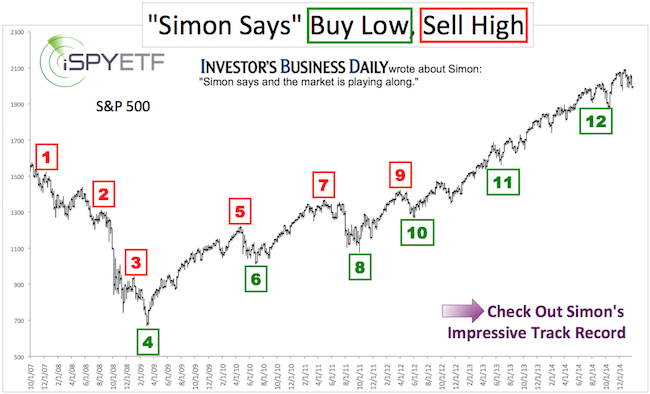It is fascinating how certain stories catch on and spread like wildfire. The media’s favorite ‘wildfire story’ at the beginning of the year was the devastating effect of falling oil (NYSEArca: USO) prices.
Here are a few headlines from January 6:
-
“Stocks plunge on fears about implications of oil slump” - AP
-
“How the bear market in oil has polluted non-energy stocks” - Bloomberg
-
“Stocks could get drilled again by oil” – CNBC
Oil prices are at the same level today as they were on January 6, but the S&P 500 (NYSEArca: SPY) is at new all-time highs.
The notion that falling oil prices are bad for the stock market is simply flawed. The research below was originally published in the December 14 Profit Radar Report:
“There is some concern that the drop in oil prices will push stocks into a bear market, similar to what happened in 2008. We live in a complex world, and here are some of the ripple effects caused by falling oil prices. A bear market is not necessarily one of them.
Low Oil Prices = Economic Stimulus
According to the U.S. Energy Information Administration (EIA), the United States consumes about 11.5 billion gallons of gasoline and 567 million barrels of crude oil per month (based on 2013 data).
Since late June, the price of regular gas fell from $3.8/gallon to $2.5/ gallon. A $1.30 drop in gas prices translates into a monthly savings of almost $15 billion for U.S. drivers.
Since late June, crude oil prices fell from $107/barrel to $58. A $49 drop in crude oil prices translates into a monthly savings of $28 billion.
Without help from the Federal Reserve, the oil market just delivered an ‘economic stimulus’ that could be valued somewhere around $43 billion a month.
Want more 'out-of-the box' stock market analysis? >> Sign up for the FREE iSPYETF e-Newsletter
Oil vs S&P 500
This year's oil price collapse differs from the 2008 collapse relative to the S&P 500. In 2008, the S&P 500 topped before oil did. In fact, the S&P 500 recorded its all-time high in October 2007 and was already down 21% by the time oil topped on July 11, 2008.
In 2014, the S&P 500 recorded new all-time highs five months after oil started to decline.
The chart below plots oil against the S&P 500 and shows that falling oil prices are not consistently bearish for stocks.
Falling oil prices after unusual spikes or bubbles (1990 Iraq war, 2008 commodity bubble – red shading) have a bigger effect on stocks than falling oil prices after a periods of consolidation (gray shading).
The 2014 meltdown came after a year of sideways trading. If history can be used as a guide, stocks are likely to hold up despite the oil meltdown.”
Simon Maierhofer is the publisher of the Profit Radar Report. The Profit Radar Report presents complex market analysis (S&P 500, Dow Jones, gold, silver, euro and bonds) in an easy format. Technical analysis, sentiment indicators, seasonal patterns and common sense are all wrapped up into two or more easy-to-read weekly updates. All Profit Radar Report recommendations resulted in a 59.51% net gain in 2013 and 17.59% in 2014.
Follow Simon on Twitter @ iSPYETF or sign up for the FREE iSPYETF Newsletter to get actionable ETF trade ideas delivered for free.

|